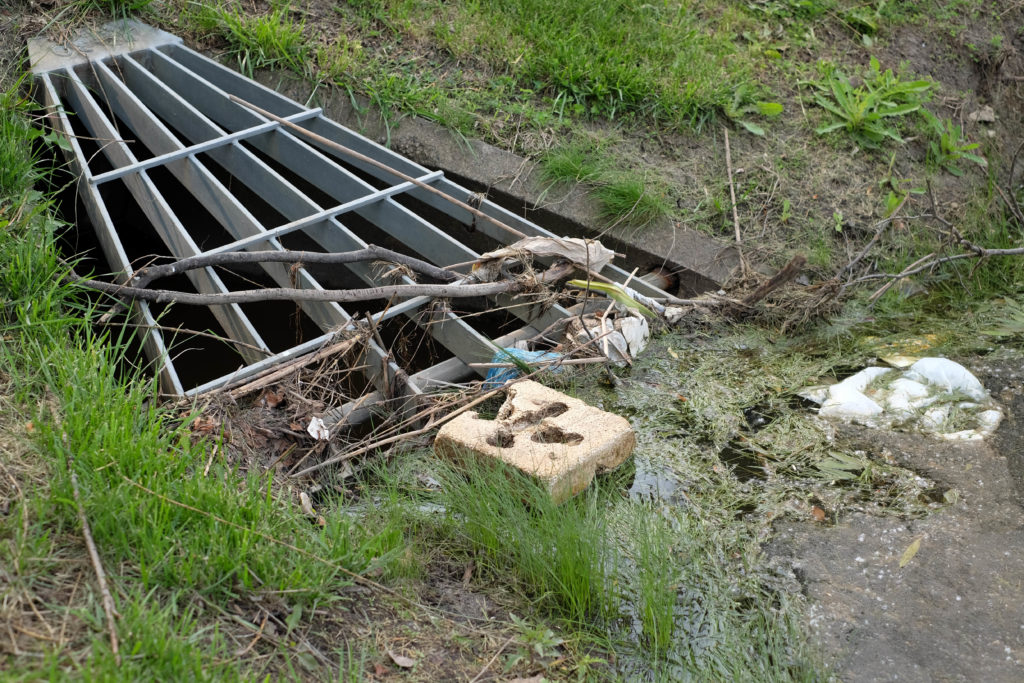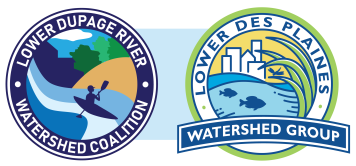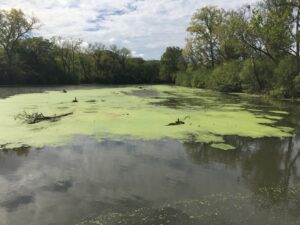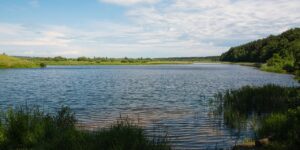What is the purpose of a detention pond?
A stormwater detention pond, or detention basin, is a man-made pond in residential and commercial areas that collects stormwater run-off from surrounding landscapes, roads, and rooftops. The detention pond temporarily holds stormwater until it slowly releases into a local waterway.
Depending on its design, some detention basins are dry-bottomed and all the water drains between storms. Some are more pond-like and hold open water all of the time. Finally, some are more wetland-like with a mix of water and vegetation.
All three types are designed to hold a specified amount of stormwater (storage capacity) based on the need of the development. Local ordinance governs the storage capacity and the release rate of a detention basin, usually based on handling specific-sized storms.
What are the benefits of a detention pond?
Detention basins reduce the rate at which stormwater enters local waterways. By temporarily storing stormwater, a detention pond can prevent flooding.
They also prevent flooding in homes. Since detention ponds capture stormwater run-off from surrounding landscapes and rooftops, stormwater collects in the basin instead of homeowners’ properties.
Detention ponds help to keep pollutants and sediment out of the streams and other waterways by allowing them to settle at the bottom of the detention pond. However, pollutants and debris can degrade a detention pond’s water quality, often leading to murky water and a thick layer of algae.

Therefore, steps should be taken to manage both the function and aesthetic of detention ponds. If properly maintained, detention ponds can regulate stormwater while being an attractive feature for residents in the area, providing opportunities to enjoy nature and increasing property value at the same time.
What are signs of a deteriorating detention pond?
- Murky Water: Stormwater run-off can carry sediment and other particles into the detention pond from surrounding landscapes and cause murky or cloudy water.
- Algae Bloom: Stormwater run-off carries nutrients from fertilizers, sediment, animal waste and other sources into the detention basin. An increase in available nutrients allows algae to flourish. Abundant algae impacts aquatic life by blocking sunlight and decreasing oxygen levels in the water.
- Shoreline erosion: If the detention basin does not have any deeply rooted plants to stabilize the soil, shoreline erosion can occur. The eroded soil adds nutrients like nitrogen and phosphorus into the water, encouraging algae growth.
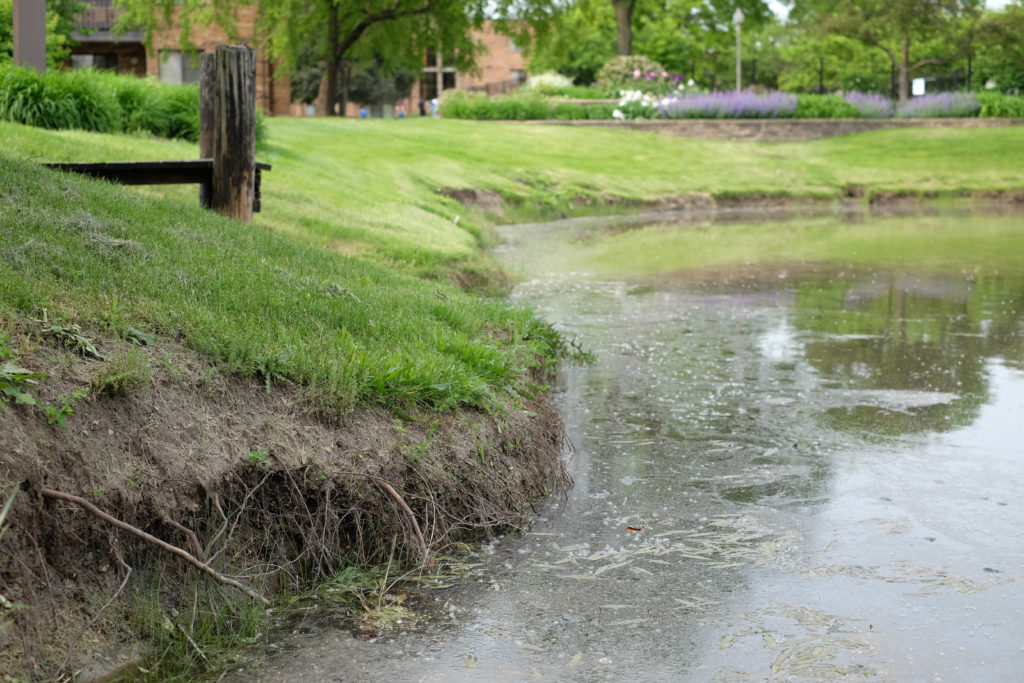

Who maintains stormwater detention ponds?
Neglected detention ponds can be unsightly and ineffective. Detention basins are usually maintained by your Homeowners Association (HOA). Residents who are unsure of the maintenance responsibilities of their local detention pond can contact their community.
How can you help maintain your local detention pond?
- Reduce lawn chemical usage: Reducing the amount of fertilizers, pesticides, and herbicides used on your lawn limits how much chemicals stormwater run-off brings into the detention pond.
- Pick up your pet’s waste: Animal waste contains bacteria which will run-off into the water and deteriorate water conditions as well as increase the health risks of people who use the water for recreational use.
- Do not litter: Make sure to dispose of trash and recyclables properly. Otherwise, stormwater can carry litter into the detention basin and block the basin’s water flow.
